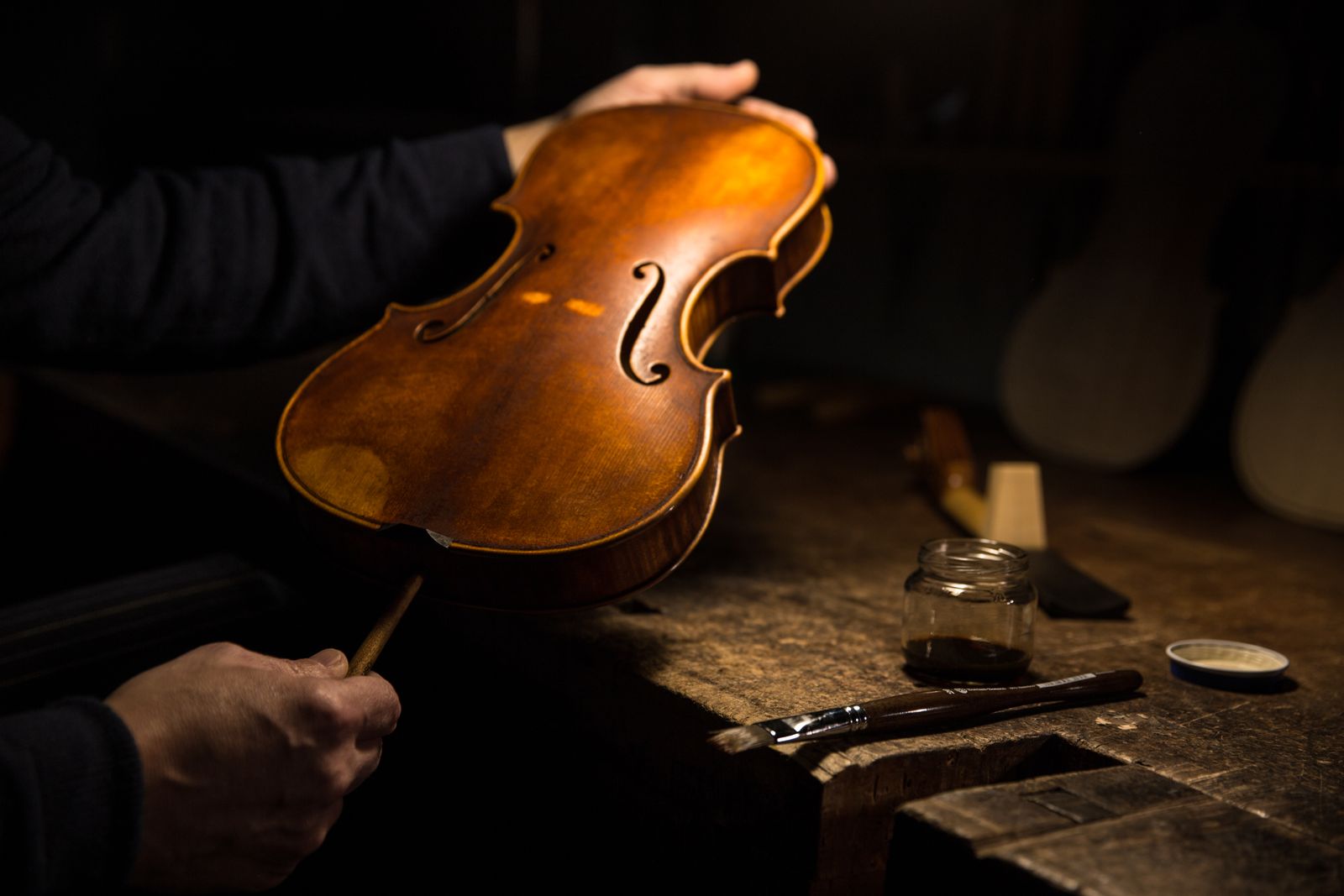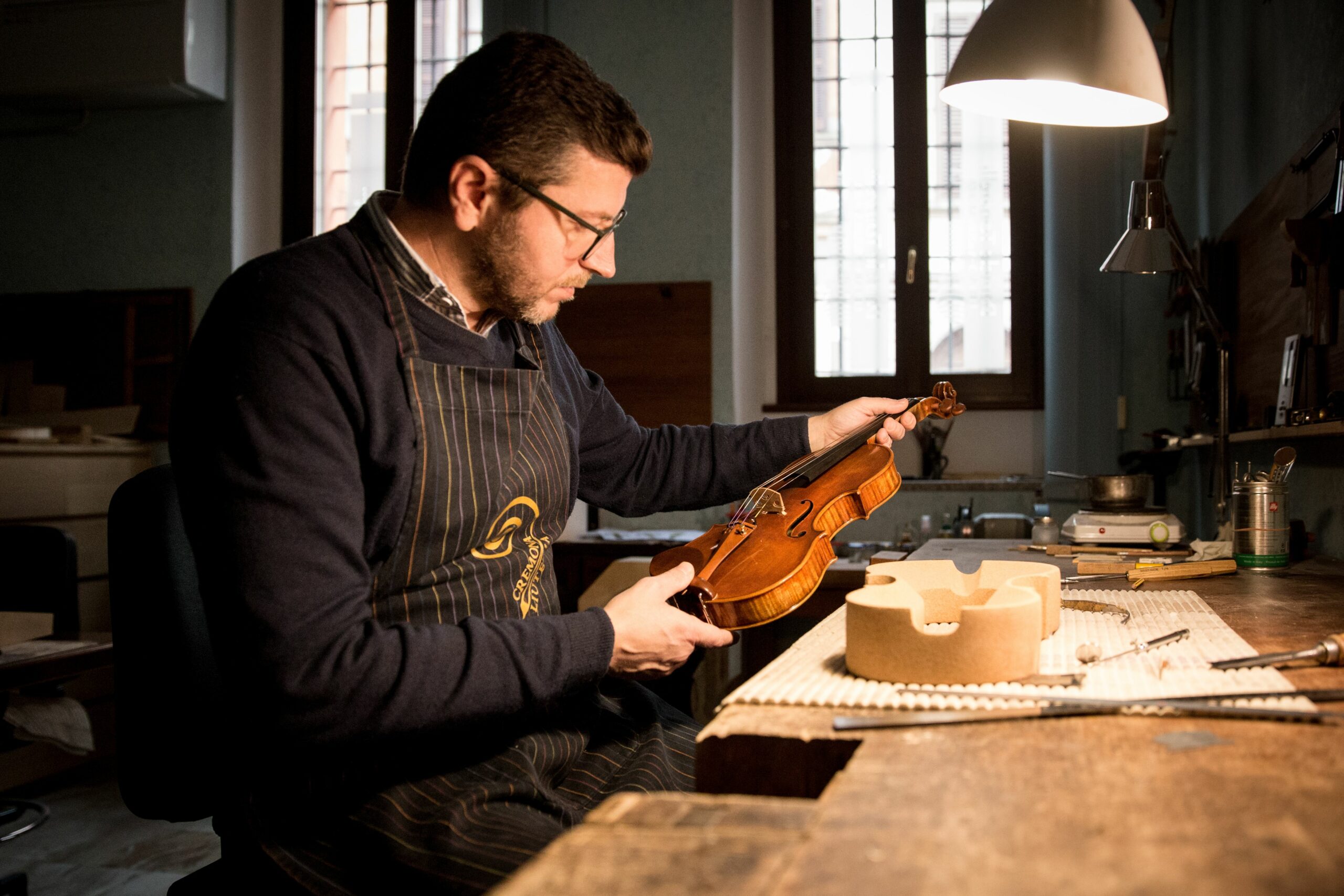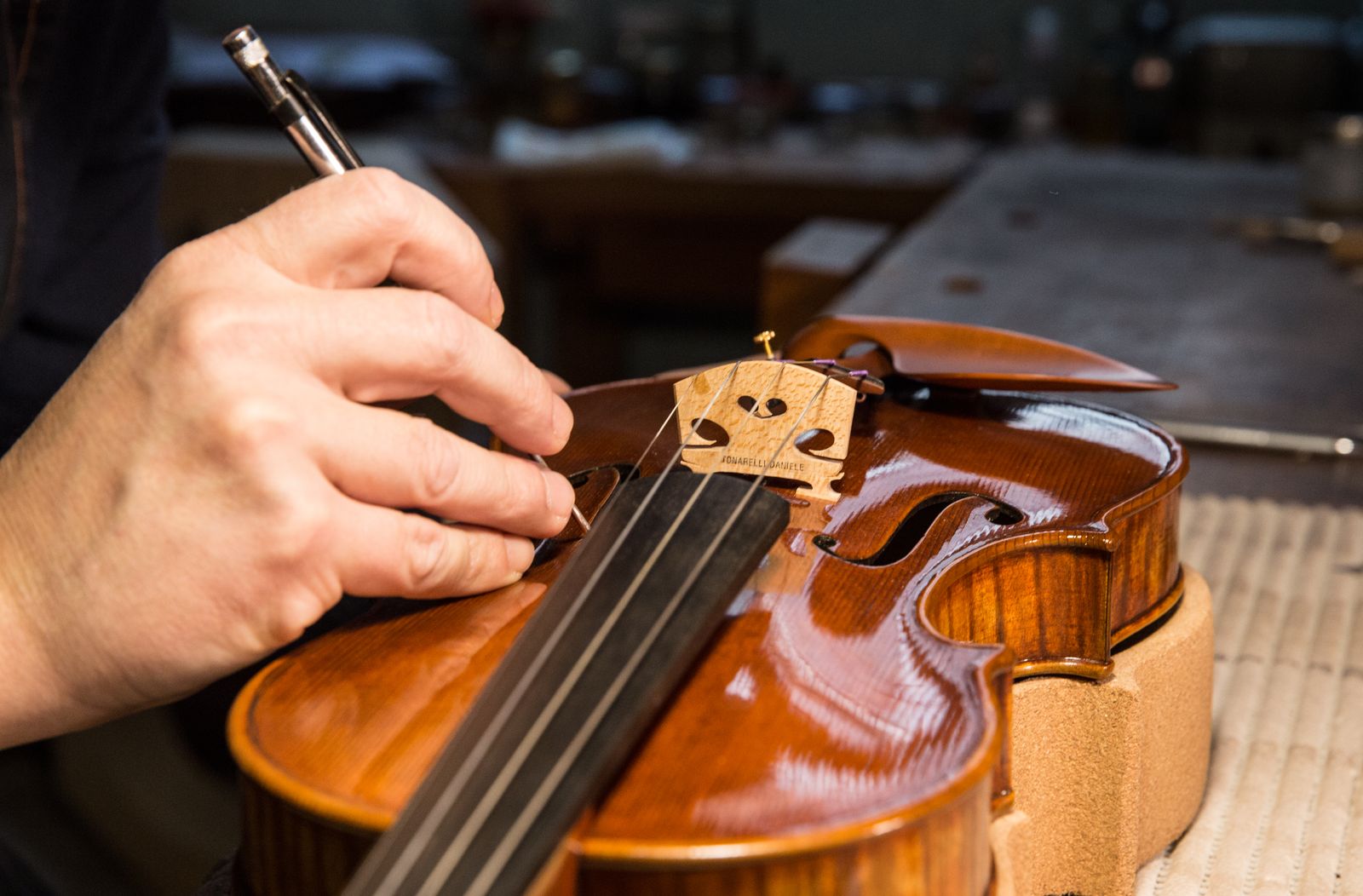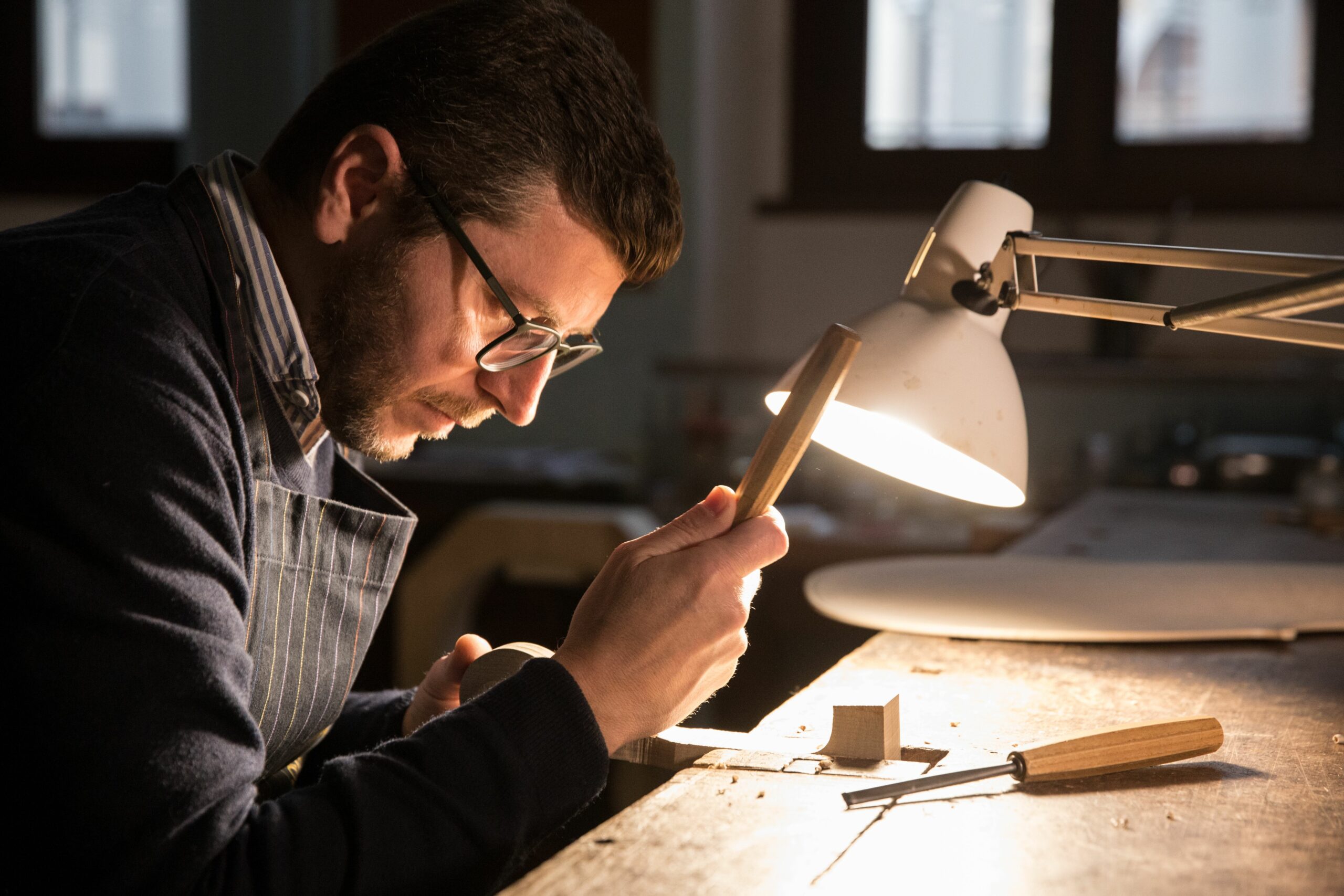Varnishing musical instruments to be used in classical music is an important and delicate process. The varnish protects the wood and the combination of substances used for the varnish must maintain the elasticity of the wood in order to enhance the acoustic properties of the instrument. After having acquired the basic notions of varnishes for violins, violas and cellos, makers usually go on to create their own recipe. This is not only a question of adding the precise quantities of resin to a given mixture; the maker must also know how to evaluate the many factors and conditions that are involved in the process. Every maker has his own varnish recipe and this may account for the usage of the word “secret” when referring to varnish. Stradivari, for example, managed to create secret recipes containing rare ingredients, the details of which are still unknown.
In keeping with the methods used by classical Cremonese makers, I prepare two types of varnish: one is oil-based, the other alcohol-based. The varnish I use depends on the final result I want to achieve.
Wood and varnish preparation
Before varnishing the instrument, the wood – being a living material – must be properly treated. To allow a violin under construction to have just the right amount of varnish absorption in the wood, a sealer must be applied. The sealer also plays an important role in terms of aesthetics and acoustics, and for this reason I use natural substances.
The preparation of the varnish mixture is complex and involves selecting a few resins amongst the hundreds of varieties present in nature. I prefer using the highest quality natural resins such as shellac, juniper, mastic and others for alcohol-based varnishes. For linseed oil based varnishes, I use amber or rosin as the extreme elasticity of linseed perfectly complements the brittleness of amber and rosin. When the two resins are melted at high temperatures and cooked for the required times, the resulting varnish protects and enhances the underlying wood.





